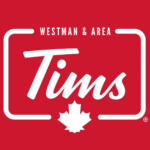
Leons Headlines Jan 8: MPI rates to rise 5.7% in coming year, driving insurance for average vehicle up $51.
-Brandon residents can review the 2025 proposed budget online starting today & join council Jan. 24-25 for deliberations at City Hall. Property owners could see an 11.7% tax increase in the municipal portion of their tax bill compared to last year.
-Brandon’s snow-clearing crews fell behind in 2024, taking 4 days on average to clear main routes instead of 3 day target, city maintenance manager tells council Monday.
-Patient death at Health Sciences Centre ER in Wpg raises questions about capacity issues, wait room protocols.
-Comark Holdings, owner of Bootlegger, Cleo & Ricki’s files for creditor protection, plans to close all Cleo & Ricki’s stores, downsize Bootlegger, seek a buyer for 221 locations including 13 in MB.
-PM Justin Trudeau: “there isn’t a snowball’s chance in hell that Canada would become part of the United States,” on the same day President-elect Trump declares he’s open to using “economic force” to acquire Canada.
-Jets beat Nashville 5-2.
Well, the joke is officially OVER. Donald Trump is telling Americans he is willing to take Canada by force, and when asked if military force he replied “economic” which likley means a trade war with America could be on the way in just a few weeks. Here’s what he said Tuesday in Florida:
A trade war could be coming fast and there are ways you can prepare, and ways you simply can’t. First, an explanation of what “economic” force means: 25% tariffs on everything Canada sends to the USA, which will prompt a response likely resulting in retaliation or “we’ll do to you what you’re doing to us”.
How would this affect YOU and ME?!?!!?
- Higher Prices on Imported Goods
U.S. Products: Many everyday items like fruits, vegetables, processed foods, and electronics from the U.S. would become more expensive as tariffs increase costs.
Canadian Goods with U.S. Inputs: Products manufactured in Canada using U.S. components, such as cars or appliances, would also see price hikes due to increased import costs. - Limited Product Availability
Some U.S. goods, especially seasonal produce and specialty items not produced in Canada, might become scarce or unavailable due to reduced imports. - Economic Ripples in Canada
Export-Dependent Sectors: Industries like agriculture, forestry, and manufacturing would face reduced demand from the U.S., Canada’s largest trading partner. This could lead to job losses, lower wages, and less disposable income for affected households.
Local Businesses: Small businesses reliant on cross-border trade might struggle to stay competitive, further reducing consumer options. - Inflation and Reduced Purchasing Power
Higher costs across sectors would contribute to inflation, eroding consumer purchasing power and making everything from groceries to housing more expensive. - Strain on Canadian Alternatives
Increased demand for Canadian-made goods to replace U.S. imports could lead to supply shortages, delays, or higher prices as domestic producers scale up to meet demand. - Reduced Consumer Confidence
Economic uncertainty could cause households to cut back on discretionary spending, impacting everything from dining out to travel and entertainment.

There are some ways to prepare and some things we can’t control. First it’s important to recognize a trade war theoretically shouldn’t last long, but to prepare here’s some sugestions:
Stock Up on products you like from the USA
Buy U.S.-Imported Goods Now: Purchase non-perishable items and essentials like pantry staples, toiletries, and medications sourced from the U.S. before tariffs increase prices.
Prepare for Seasonal Shortages: Stock up on fresh produce typically imported from the U.S. during winter months.
- Support and Transition to Canadian Alternatives
Identify Domestic Options: Look for Canadian-made products to reduce reliance on U.S. imports. This can help offset potential shortages and price hikes.
Shift to Local Food: Explore local farmers’ markets or community-supported agriculture (CSA) programs for produce and goods. - Cut Energy Costs
Reduce Consumption: Implement energy-saving practices like sealing windows, using energy-efficient appliances, and minimizing heating costs.
Consider Alternatives: If feasible, explore renewable energy options like solar panels or other local energy sources. - Manage Personal Finances
Build a Financial Cushion: Save as much as possible to prepare for potential cost-of-living increases.
Pay Down Debt: Reduce reliance on credit to create more financial flexibility.
Reevaluate Budgets: Focus on essential expenses and cut discretionary spending where possible. - Diversify Income Sources
Look for Additional Revenue Streams: Consider side gigs or freelance work to supplement your income.
Explore Remote U.S. Opportunities: If you work in industries tied to U.S. trade, explore remote job options that may remain insulated from tariffs. - Advocate for Local Businesses
Support Local Producers: Prioritize Canadian businesses that might struggle with reduced U.S. demand.
Collaborate: Join community initiatives to strengthen local economies and mutual support networks. - Stay Informed
Follow news on trade developments and government responses to understand potential impacts on your region.
Check for programs or subsidies that may emerge to help Canadians cope with rising costs.
@tips.044 Palisades Fire in Los Angeles 🇺🇸 today 2025 #losangeles #palisadesfire #pacificpalisades #wildfire #california #2025 #viral_video
♬ Thunderstorm (environmental sound)(53155) – Killy
CALIFORNIA ON FIRE. Imagine a population close to the City of Brandon being evactuated in the Los Angeles area. Officials Warn of ‘Devastating Loss’ as Southern California Wildfires Burn Out of Control. Parts of Santa Monica were ordered to be evacuated as fast-moving flames destroyed homes along the coast in Los Angeles. Winds were picking up overnight fueling the fires.
LA TV STATION LIVE:
https://www.youtube.com/live/59VF9WASKDU
OOPS did you see it? A cameraman was spotted in the background of a scene in Squid Game Season 2, sparking online criticism.
Have you put your Christmas decorations away yet? A woman warns on TikTok that storing Christmas decorations in cardboard boxes can lead to creepy surprises, like rattling ornaments.
@empease7 PSA: If you stored ornaments in a cardboard box, give them a good shake outside before decorating inside. #christmas #ornaments #nightmarebeforechristmas #ants #ornamentsmash #fyp
♬ We Wish You a Merry Christmas (Glockenspiel Version) – Musik Bayi ID
It’s back from nearly 40 years ago! A popular 1980s soda, is making a comeback with more than double the caffeine.
https://www.eatthis.com/jolt-cola-return-caffeine-2025
Consumer electronic show is ON in VEGAS: And it’s All about AI
@vegasnavigator CES Unveiled 2025 – This is where the world’s media gets their first look at groundbreaking tech before CES 2025 officially opens. ✨ Highlights: 🏆 CES Innovation Award Winners 🎯 Hand-picked exhibitors 🌟 Breakthrough products 🤝 One-on-one with innovators 🔍 Exclusive first looks 🎤 Direct access to creators Thanks to Joshua Riley and @angelaelizabethcarriero for filming. #CES2025 #CESUnveiled #LasVegas #Vegas #VegasLocal #TechNews #Innovation #FutureOfTech #TechJournalist #ConsumerTech #CESAwards #TechnologyNews #Digital #SmartTech #Innovation2025 Stay tuned for more exclusive coverage from the ground! Your Vegas Navigator bringing you the best of CES 2025! 🎯✨
♬ original sound – Vegas Navigator















